1.Identification
1.1 GHS Product identifier
| Product name | paraldehyde |
|---|
1.2 Other means of identification
| Product number | - |
|---|---|
| Other names | FEMA 2003 |
1.3 Recommended use of the chemical and restrictions on use
| Identified uses | For industry use only. Food additives -> Flavoring Agents |
|---|---|
| Uses advised against | no data available |
1.4 Supplier's details
| Company | MOLBASE (Shanghai) Biotechnology Co., Ltd. |
|---|---|
| Address | Floor 4 & 5, Building 12, No. 1001 North Qinzhou Road, Xuhui District, Shanghai, China |
| Telephone | +86(21)64956998 |
| Fax | +86(21)54365166 |
1.5 Emergency phone number
| Emergency phone number | +86-400-6021-666 |
|---|---|
| Service hours | Monday to Friday, 9am-5pm (Standard time zone: UTC/GMT +8 hours). |
2.Hazard identification
2.1 Classification of the substance or mixture
Flammable liquids, Category 3
2.2 GHS label elements, including precautionary statements
| Pictogram(s) |  |
|---|---|
| Signal word | Warning |
| Hazard statement(s) | H226 Flammable liquid and vapour |
| Precautionary statement(s) | |
| Prevention | P210 Keep away from heat, hot surfaces, sparks, open flames and other ignition sources. No smoking. P233 Keep container tightly closed. P240 Ground and bond container and receiving equipment. P241 Use explosion-proof [electrical/ventilating/lighting/...] equipment. P242 Use non-sparking tools. P243 Take action to prevent static discharges. P280 Wear protective gloves/protective clothing/eye protection/face protection. |
| Response | P303+P361+P353 IF ON SKIN (or hair): Take off immediately all contaminated clothing. Rinse skin with water [or shower]. P370+P378 In case of fire: Use ... to extinguish. |
| Storage | P403+P235 Store in a well-ventilated place. Keep cool. |
| Disposal | P501 Dispose of contents/container to ... |
2.3 Other hazards which do not result in classification
none
3.Composition/information on ingredients
3.1 Substances
| Chemical name | Common names and synonyms | CAS number | EC number | Concentration |
|---|---|---|---|---|
| paraldehyde | paraldehyde | 123-63-7 | none | 100% |
4.First-aid measures
4.1 Description of necessary first-aid measures
General advice
Consult a physician. Show this safety data sheet to the doctor in attendance.
If inhaled
Fresh air, rest. Refer for medical attention.
In case of skin contact
Remove contaminated clothes. Rinse and then wash skin with water and soap.
In case of eye contact
First rinse with plenty of water for several minutes (remove contact lenses if easily possible), then refer for medical attention.
If swallowed
Do NOT induce vomiting. Give one or two glasses of water to drink. Refer for medical attention .
4.2 Most important symptoms/effects, acute and delayed
INHALATION AND INGESTION: Irritation, headache, bronchitis, pulmonary edema. Irritating to digestive tract. Hypnotic and analgesic properties. Incoordination and drowsiness, followed by sleep. Larger doses-coma-weak pulse and shallow respiration, cyanosis-death from respiratory paralysis. EYES: irritation-can cause serious injury. SKIN: Dermatitis (skin inflammation). (USCG, 1999)
4.3 Indication of immediate medical attention and special treatment needed, if necessary
Treatment is directed toward maintenance of airway, breathing, and circulation. Supportive care is the mainstay of therapy. Patients are often critically ill and must be under constant supervision.
5.Fire-fighting measures
5.1 Extinguishing media
Suitable extinguishing media
Use water spray, dry chemical, "alcohol resistant" foam, or carbon dioxide. Water may be ineffective. Use water spray to keep fire exposed containers cool. Approach fire from upwind to avoid hazardous vapors and toxic decomposition products.
5.2 Specific hazards arising from the chemical
Special Hazards of Combustion Products: Emits toxic fumes on heating. Behavior in Fire: Can react vigorously when exposed to heat or flame. Vapor is heavier than air and may travel a considerable distance to source of ignition and flash back. (USCG, 1999)
5.3 Special protective actions for fire-fighters
Wear self-contained breathing apparatus for firefighting if necessary.
6.Accidental release measures
6.1 Personal precautions, protective equipment and emergency procedures
Use personal protective equipment. Avoid dust formation. Avoid breathing vapours, mist or gas. Ensure adequate ventilation. Evacuate personnel to safe areas. Avoid breathing dust. For personal protection see section 8.
6.2 Environmental precautions
Remove all ignition sources. Personal protection: filter respirator for organic gases and vapours adapted to the airborne concentration of the substance. Collect leaking and spilled liquid in sealable non-plastic containers as far as possible. Absorb remaining liquid in sand or inert absorbent. Then store and dispose of according to local regulations.
6.3 Methods and materials for containment and cleaning up
Pick up and arrange disposal. Sweep up and shovel. Keep in suitable, closed containers for disposal.
7.Handling and storage
7.1 Precautions for safe handling
Avoid contact with skin and eyes. Avoid formation of dust and aerosols. Avoid exposure - obtain special instructions before use.Provide appropriate exhaust ventilation at places where dust is formed. For precautions see section 2.2.
7.2 Conditions for safe storage, including any incompatibilities
Fireproof. Separated from food and feedstuffs, bases and oxidants.PARALDEHYDE SHOULD BE STORED IN WELL-FILLED, TIGHT, LIGHT-RESISTANT GLASS CONTAINERS WITH A CAPACITY OF NO MORE THAN 30 ML, AT A TEMP NOT EXCEEDING 25 DEG C.
8.Exposure controls/personal protection
8.1 Control parameters
Occupational Exposure limit values
no data available
Biological limit values
no data available
8.2 Appropriate engineering controls
Handle in accordance with good industrial hygiene and safety practice. Wash hands before breaks and at the end of workday.
8.3 Individual protection measures, such as personal protective equipment (PPE)
Eye/face protection
Safety glasses with side-shields conforming to EN166. Use equipment for eye protection tested and approved under appropriate government standards such as NIOSH (US) or EN 166(EU).
Skin protection
Wear impervious clothing. The type of protective equipment must be selected according to the concentration and amount of the dangerous substance at the specific workplace. Handle with gloves. Gloves must be inspected prior to use. Use proper glove removal technique(without touching glove's outer surface) to avoid skin contact with this product. Dispose of contaminated gloves after use in accordance with applicable laws and good laboratory practices. Wash and dry hands. The selected protective gloves have to satisfy the specifications of EU Directive 89/686/EEC and the standard EN 374 derived from it.
Respiratory protection
Wear dust mask when handling large quantities.
Thermal hazards
no data available
9.Physical and chemical properties
| Physical state | Colourless to yellowish clear liquid |
|---|---|
| Colour | COLORLESS, TRANSPARENT LIQUID |
| Odour | CHARACTERISTIC AROMATIC ODOR |
| Melting point/ freezing point | 12ºC |
| Boiling point or initial boiling point and boiling range | 124ºC |
| Flammability | Highly flammable. |
| Lower and upper explosion limit / flammability limit | LOWER LIMIT, 1.3%. |
| Flash point | 27ºC |
| Auto-ignition temperature | 237.78°C (USCG, 1999) |
| Decomposition temperature | no data available |
| pH | no data available |
| Kinematic viscosity | 1.128 centipoise at 70 deg F |
| Solubility | In water:125 g/L (25 ºC) |
| Partition coefficient n-octanol/water (log value) | Log Kow = 0.67 |
| Vapour pressure | 25.89 psi ( 55 °C) |
| Density and/or relative density | 0.992 |
| Relative vapour density | 1.52 (vs air) |
| Particle characteristics | no data available |
10.Stability and reactivity
10.1 Reactivity
no data available
10.2 Chemical stability
ON EXPOSURE TO LIGHT & AIR, IT DECOMP TO ACETALDEHYDE & IS OXIDIZED TO ACETIC ACID
10.3 Possibility of hazardous reactions
DANGEROUS, WHEN EXPOSED TO HEAT, FLAME OR OXIDIZERS.The vapour is heavier than air and may travel along the ground; distant ignition possible.PARALDEHYDE is an ether derivative. This compound is decomposed by light and air, on prolonged storage, to acetaldehyde and acetic acid. Incompatible with alkalis, hydrocyanic acid iodides and oxidizers.
10.4 Conditions to avoid
no data available
10.5 Incompatible materials
Paraldehyde is incompatible with many plastics
10.6 Hazardous decomposition products
EMITS TOXIC FUMES ON HEATING.
11.Toxicological information
Acute toxicity
- Oral: LD50 Dog oral (acute) 3.0 to 4.0 g/kg
- Inhalation: no data available
- Dermal: no data available
Skin corrosion/irritation
no data available
Serious eye damage/irritation
no data available
Respiratory or skin sensitization
no data available
Germ cell mutagenicity
no data available
Carcinogenicity
no data available
Reproductive toxicity
no data available
STOT-single exposure
no data available
STOT-repeated exposure
no data available
Aspiration hazard
no data available
12.Ecological information
12.1 Toxicity
- Toxicity to fish: no data available
- Toxicity to daphnia and other aquatic invertebrates: no data available
- Toxicity to algae: no data available
- Toxicity to microorganisms: no data available
12.2 Persistence and degradability
Japanese MITI, initial concn 100 ppm, 14 days <30% BODT, activated sludge inoculum(1). A bacterium isolated from sewage, C. paraldehydium KY 4359, was found to degrade paraldehyde to acetaldehyde and acetic acid(2).
12.3 Bioaccumulative potential
Based on a water solubility of 125,000 mg/l at 25°C and a log Kow of 0.67, bioconcentration factors (BCF) of 0.8-2 were estimated for paraldehyde(1,2,3,SRC). These BCF values suggest that paraldehyde would not bioaccumulate significantly in aquatic organisms(SRC).
12.4 Mobility in soil
Soil adsorption coefficients (Koc) of 7-55 were estimated for paraldehyde using linear regression equations based on a water solubility of 125,000 mg/l at 25°C and a log Kow of 0.67(1,2,3,SRC). These Koc values suggest that paraldehyde would be very highly mobile in soil and that adsorption to suspended solids and sediments in water would be insignificant(4,SRC).
12.5 Other adverse effects
no data available
13.Disposal considerations
13.1 Disposal methods
Product
The material can be disposed of by removal to a licensed chemical destruction plant or by controlled incineration with flue gas scrubbing. Do not contaminate water, foodstuffs, feed or seed by storage or disposal. Do not discharge to sewer systems.
Contaminated packaging
Containers can be triply rinsed (or equivalent) and offered for recycling or reconditioning. Alternatively, the packaging can be punctured to make it unusable for other purposes and then be disposed of in a sanitary landfill. Controlled incineration with flue gas scrubbing is possible for combustible packaging materials.
14.Transport information
14.1 UN Number
| ADR/RID: UN1264 | IMDG: UN1264 | IATA: UN1264 |
14.2 UN Proper Shipping Name
| ADR/RID: PARALDEHYDE |
| IMDG: PARALDEHYDE |
| IATA: PARALDEHYDE |
14.3 Transport hazard class(es)
| ADR/RID: 3 | IMDG: 3 | IATA: 3 |
14.4 Packing group, if applicable
| ADR/RID: II | IMDG: II | IATA: II |
14.5 Environmental hazards
| ADR/RID: no | IMDG: no | IATA: no |
14.6 Special precautions for user
no data available
14.7 Transport in bulk according to Annex II of MARPOL 73/78 and the IBC Code
no data available
15.Regulatory information
15.1 Safety, health and environmental regulations specific for the product in question
| Chemical name | Common names and synonyms | CAS number | EC number |
|---|---|---|---|
| paraldehyde | paraldehyde | 123-63-7 | none |
| European Inventory of Existing Commercial Chemical Substances (EINECS) | Listed. | ||
| EC Inventory | Listed. | ||
| United States Toxic Substances Control Act (TSCA) Inventory | Listed. | ||
| China Catalog of Hazardous chemicals 2015 | Listed. | ||
| New Zealand Inventory of Chemicals (NZIoC) | Listed. | ||
| Philippines Inventory of Chemicals and Chemical Substances (PICCS) | Listed. | ||
| Vietnam National Chemical Inventory | Not Listed. | ||
| Chinese Chemical Inventory of Existing Chemical Substances (China IECSC) | Listed. | ||
16.Other information
Information on revision
| Creation Date | Aug 12, 2017 |
|---|---|
| Revision Date | Aug 12, 2017 |
Abbreviations and acronyms
- CAS: Chemical Abstracts Service
- ADR: European Agreement concerning the International Carriage of Dangerous Goods by Road
- RID: Regulation concerning the International Carriage of Dangerous Goods by Rail
- IMDG: International Maritime Dangerous Goods
- IATA: International Air Transportation Association
- TWA: Time Weighted Average
- STEL: Short term exposure limit
- LC50: Lethal Concentration 50%
- LD50: Lethal Dose 50%
- EC50: Effective Concentration 50%
References
- IPCS - The International Chemical Safety Cards (ICSC), website: http://www.ilo.org/dyn/icsc/showcard.home
- HSDB - Hazardous Substances Data Bank, website: https://toxnet.nlm.nih.gov/newtoxnet/hsdb.htm
- IARC - International Agency for Research on Cancer, website: http://www.iarc.fr/
- eChemPortal - The Global Portal to Information on Chemical Substances by OECD, website: http://www.echemportal.org/echemportal/index?pageID=0&request_locale=en
- CAMEO Chemicals, website: http://cameochemicals.noaa.gov/search/simple
- ChemIDplus, website: http://chem.sis.nlm.nih.gov/chemidplus/chemidlite.jsp
- ERG - Emergency Response Guidebook by U.S. Department of Transportation, website: http://www.phmsa.dot.gov/hazmat/library/erg
- Germany GESTIS-database on hazard substance, website: http://www.dguv.de/ifa/gestis/gestis-stoffdatenbank/index-2.jsp
- ECHA - European Chemicals Agency, website: https://echa.europa.eu/
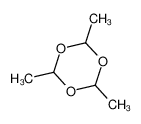



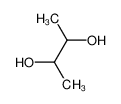



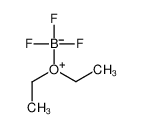



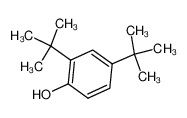









-
-

-
-
-

-
-
-

-
-
-

-
-
-

-
-
-

-
-
-

-
-
-

-
-
-
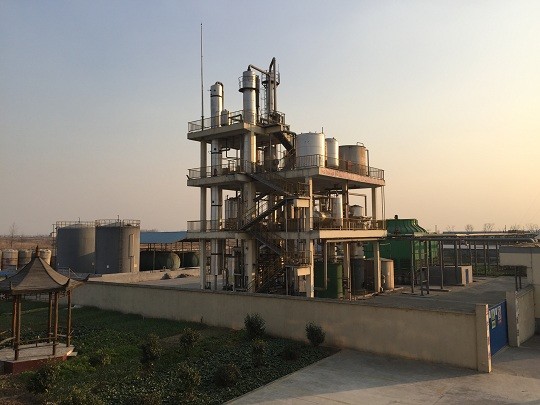
-
-
-

-
More Suppliers>>Baoji Guokang Bio-Technology Co., Ltd
CHINA
Purity: 99%
Lead Time: 3 Day(s)
Price: -
Changzhou Xinxinglian Biotechnology Co., Ltd.
CHINA
Purity: 98%
Lead Time: 7 Day(s)
Price: -
Wenzhou Win-Win Chemical Co., Ltd.
CHINA
Purity: 98%
Lead Time: 1 Week(s)
Price: -
Hangzhou J&H Chemical Co., Ltd.
CHINA
Purity: >97%
Lead Time: 7 Day(s)
Price: -
Skyrun Industrial Co., Limited
CHINA
Purity: 99%
Lead Time: 7 Day(s)
Price: -
Hangzhou Bingochem Co., Ltd.
CHINA
Purity: 98%
Lead Time: 7 Day(s)
Price: -
Shanghai Ziming Reagent Factory
CHINA
Purity: 98%
Lead Time: 14 Day(s)
Price: Min $16 /l
CHINA
Purity: 99%min%
Lead Time: 3 Day(s)
Price: -
Yangzhou Debang Chemical Co., Ltd.
CHINA
Purity: 99%
Lead Time: 7 Day(s)
Price: Min $3000 /吨
Chengdu Changzheng Glass Co.,Ltd.
CHINA
Purity: 96%
Lead Time: 7 Day(s)
Price: -